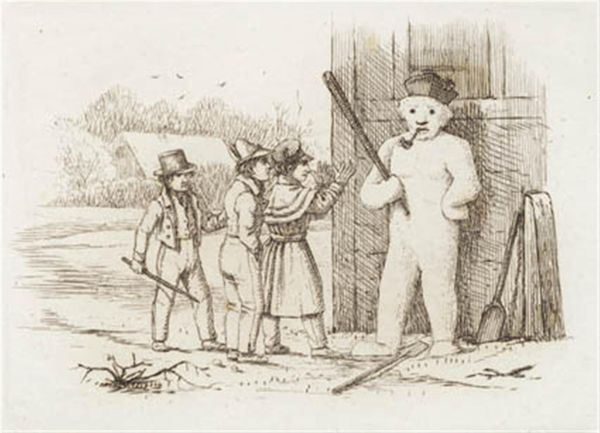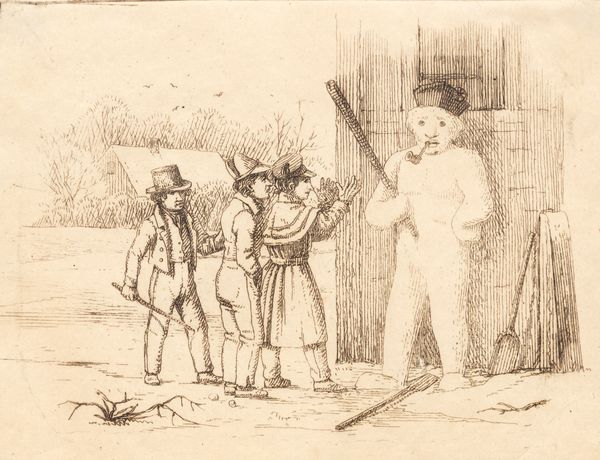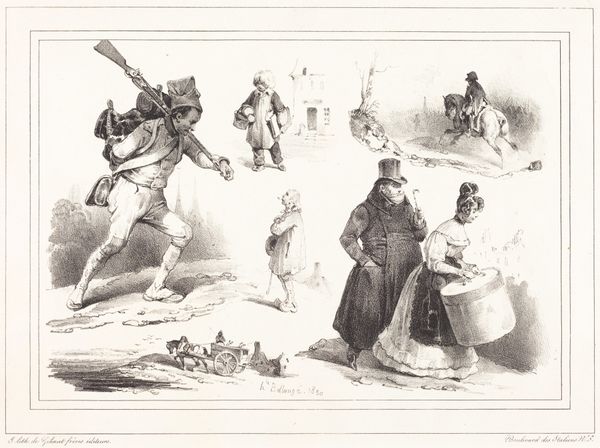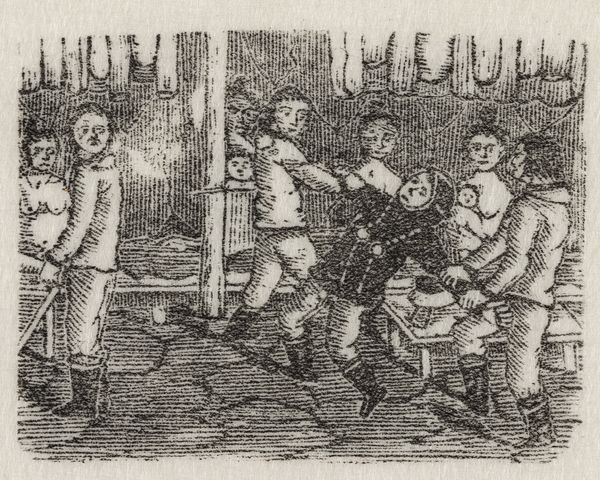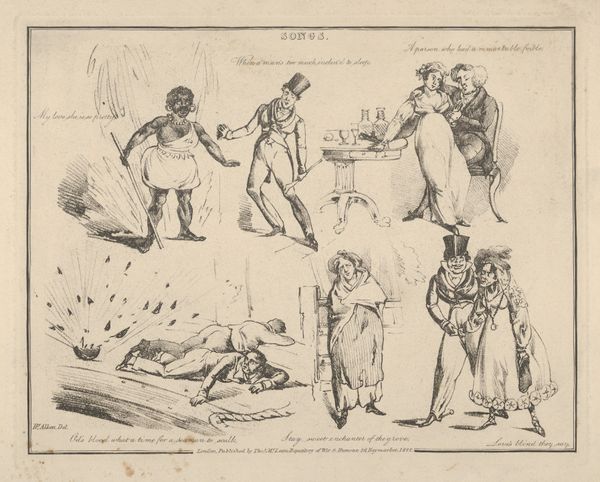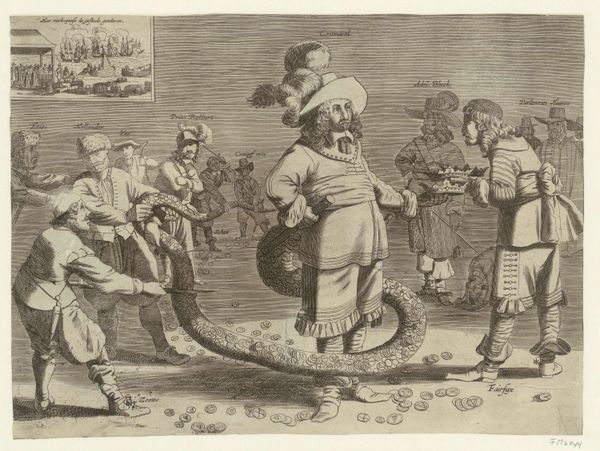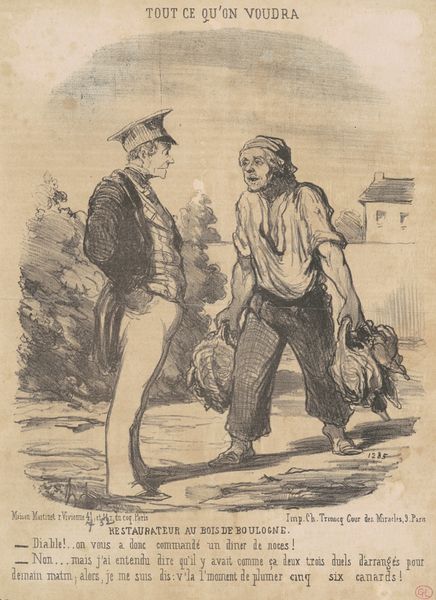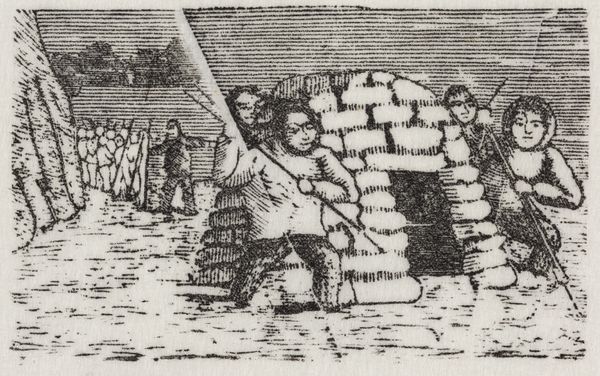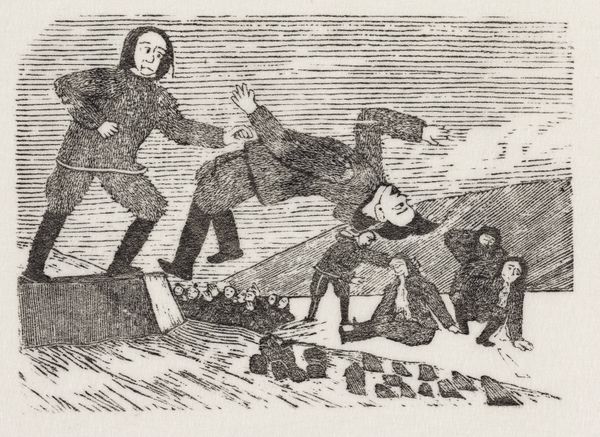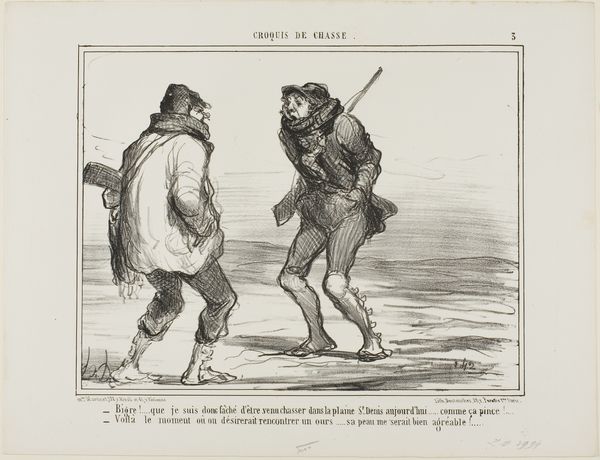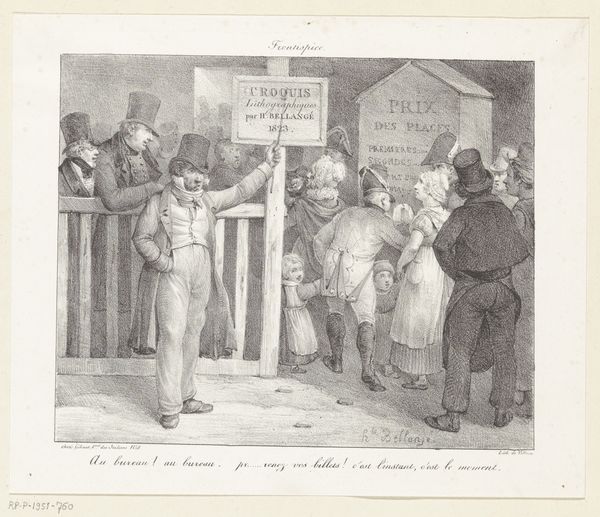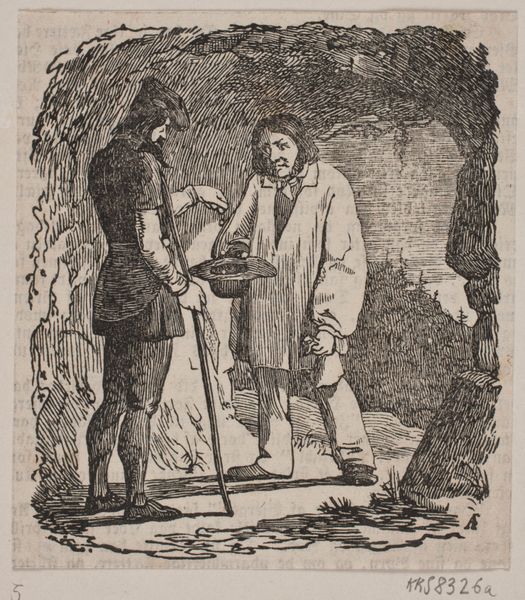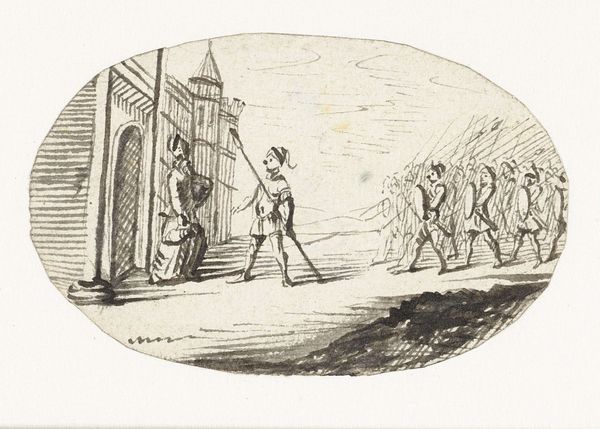
Illustration til "Halvhundrede Fabler for Børn" af Hey 1834
0:00
0:00
drawing, print, pencil, engraving
#
drawing
#
narrative-art
# print
#
pencil sketch
#
romanticism
#
pencil
#
engraving
Dimensions: 90 mm (height) x 114 mm (width) (bladmaal)
Curator: We’re standing before "Illustration til \"Halvhundrede Fabler for Børn\" af Hey" a drawing by Martinus Rørbye from 1834. The artwork is rendered in pencil and engraving, part of a series intended to illustrate a collection of fables for children. What strikes you most upon first glance? Editor: Well, it possesses a quaint, almost uncanny mood. The composition, with the group of children juxtaposed against this rather imposing snowman figure, feels deliberately theatrical. There’s a stage-like quality emphasized by the crude engraving suggesting it's a quickly produced reproduction. Curator: I agree; there's an interesting formal tension at play. Consider the line work: notice the dense hatching and cross-hatching that delineate form and texture, particularly in the snowman's figure and the roughly rendered wooden fence, juxtaposed with the finer, more precise lines detailing the children's clothing and faces. The artist seems invested in visually constructing the moral fiber of childhood within these fabular spaces. Editor: I see those differences as revealing the means of its making. Those hurried marks speak to the work of a tradesperson churning out images for quick sale, or to illustrate an affordable collection. Were children, the end users of this image, part of Rørbye's consideration of this work? How did the methods and means affect access and reception for its young audience? Curator: Intriguing thoughts! And yes, the contrast could be read through that lens. Looking closely, one sees how Rørbye employs strategies drawn from Romanticism to infuse a didactic narrative—exemplified through meticulous use of form to highlight the implied lesson for children as intended viewers of such fable. Editor: Perhaps Rørbye's piece even asks what fables, and the telling of fables, demand in material terms: paper, pencil, affordable and hasty printing methods… What sacrifices are made? The engraving style indicates to me more a functional than an artistic aspiration. Curator: Perhaps it's both; let's not limit the dialogue to only functionality. What I will agree on is how these details further reinforce a central idea that can speak as clearly today as in Rørbye's time, nearly two centuries ago, how do visual and narrative languages affect different segments of audiences? Editor: Right; it forces us to remember how even simple images like this rely on a complex interplay of economic resources, labor, and targeted messaging, impacting how children of the period perceived the world. Curator: So well captured: how Romanticism as visual culture became a series of moral imperatives presented with different weight. Editor: Thanks to material reproduction.
Comments
No comments
Be the first to comment and join the conversation on the ultimate creative platform.
